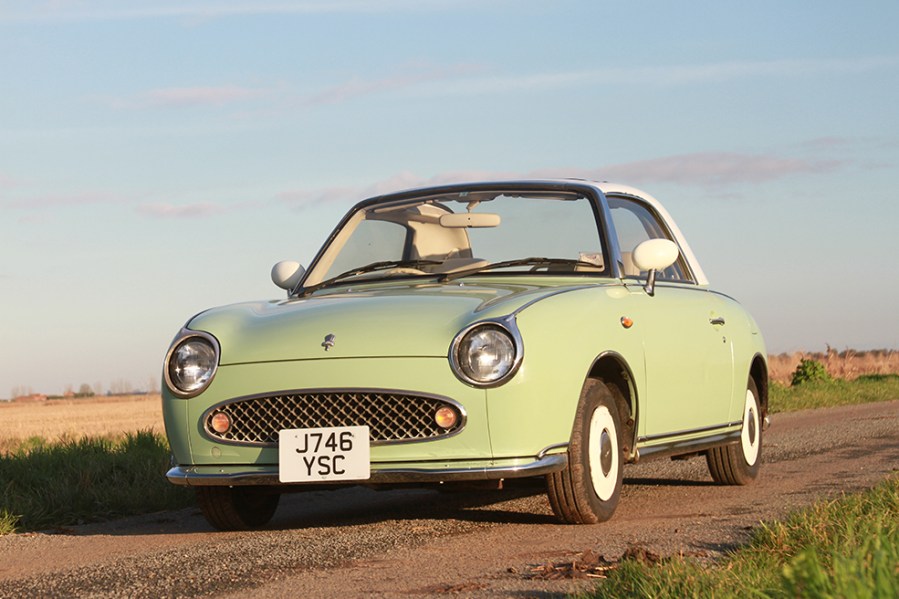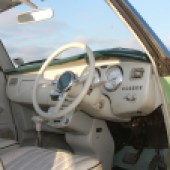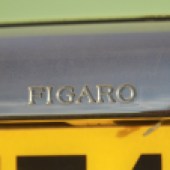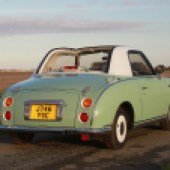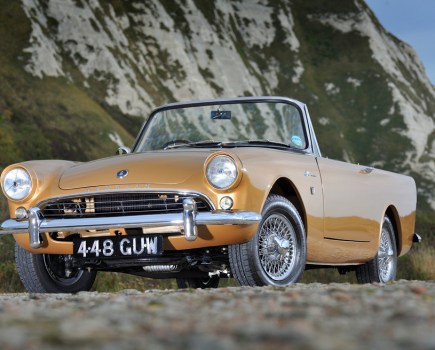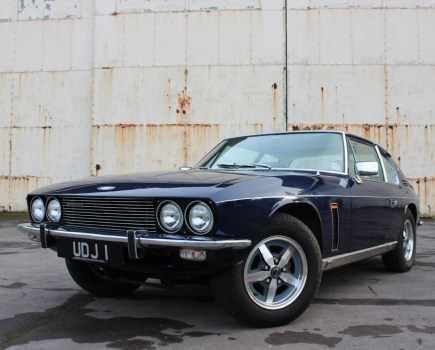Looking for a retro 2+2 with charm and character by the bucketload? The Nissan Figaro could be just the ticket. Here’s how to buy one
Words: Chris Randall
Designed by Shoji Takahashi and Naoki Sakai, the Figaro was one of Nissan’s ‘Pike Factory’ cars – which included the Be-1, Pao and S-Cargo – and was launched at the 1989 Tokyo Motor Show. Developed from the concept of ‘Nostalgic Modern’ according to the company, it was a feast of retro design cues and a car that turned heads quicker than most supercars. Just 20,000 were built, all of them in 1991 and for the Japanese market only, and such was its popularity that a lottery had to be held to pick the buyers.
Underneath the eye-catching skin was the running gear from the Nissan March (Micra to us) with the turbocharged 1.0-litre four-cylinder engine driving the front wheels via a three-speed automatic transmission; 75bhp meant modest performance, but this car was all about the way it looked. The Figaro was offered in only four colours – Emerald Green, Pale Aqua, Topaz Mist and Lapis Grey, representing spring, summer, autumn and winter respectively. A good few thousand found their way to the UK, so if you’re charmed by its appearance you won’t have much trouble finding one.
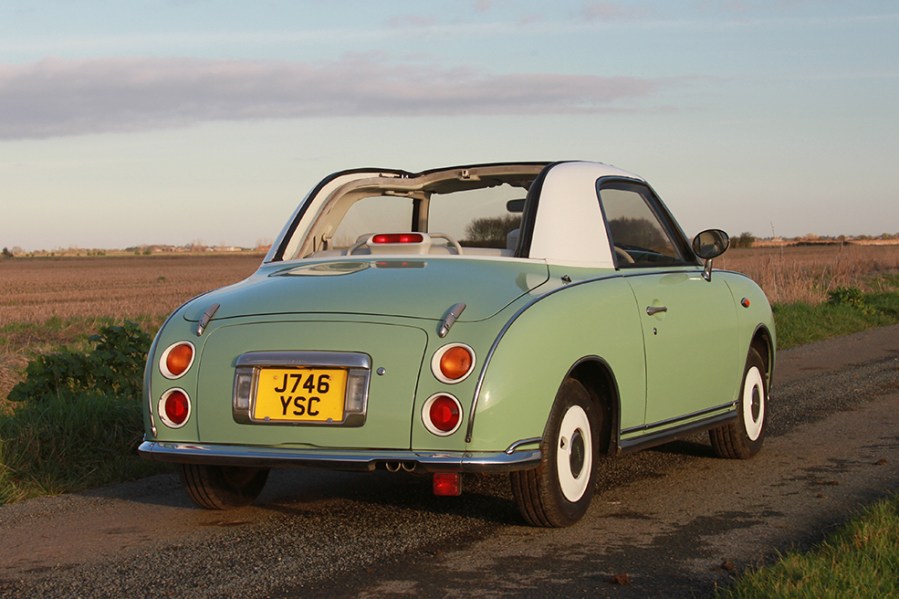
Bodywork
The front panel and wings are formed from a plastic resin, so assuming there’s no obvious damage there’s nothing to worry about. It’s not such good news further back where the steel panels are prone to corrosion, and the double-skinned sections can harbour rot that’s more serious than it appears on the surface. The rear wheelarches are a common trouble spot and if it’s bad you could be looking at £1500 to repair both sides, and the sills also need careful examination, just ahead of the rear wheels in particular. We’d want to ensure that undersealing has been done properly, too. Also check the bonnet and boot edges along with the bottom of the doors, which have a tendency to rust from the inside.
A good look in the area beneath the rear bumper is wise, too; it’s where the drains exit from the ‘wet boot’ (it’s designed to allow water inside, so anything placed in there will get wet if it’s raining) and if they get blocked it allows water to get into all manner of hidden areas. The steel panel around the rear screen is a further rot-spot so look for bubbling beneath the vinyl that points to corrosion – you could be looking at £500 to replace the panel and GRP items are available.
The folding roof shrinks over time, leading to water ingress, but many have been replaced by now. As mentioned earlier, there were just four original colours so anything else means it’s been repainted; the chosen shade will be a matter of preference but check how well the work was done. Ensure that exterior trim and brightwork is present and correct, too; for example, replacing both bumpers can cost £1000-plus. Lastly, bear in mind that major restoration will get expensive so satisfy yourself that any corrosion (or accident damage) has been repaired to a high standard.
Engine and transmission
The little turbocharged engine is pretty robust but proper maintenance is required if it’s to cover a high mileage without problems. Oil and filter changes every 6000 miles are a good starting point. It’s also important to replace the cam belt every four years/31,000 miles with the water pump renewed at the same time; a complete kit is around £120 and it’s not a difficult job to do. Replacing the head gasket is a bit more time-consuming according to a specialist we spoke to, so ensure all is well with no sign of oil and water mixing. And look for evidence of overheating or a cooling system in need of an overhaul – Tobyn Brooks from the Figaro Shop advises playing close attention to hoses and seals which could be perished on little-used cars, adding that uprating the cooling system is worth considering.
Otherwise, it’s a case of checking for obvious exhaust smoke or lack of performance pointing to a worn turbo (replacement is £700-1000 if factoring in labour) and for oil leaks from around the sump. A quiet-running engine is good news, too, as rattles could be piston problems that mean a rebuild is due. Engine and service parts are easy to source, though, and a fully reconditioned unit is around £2000 should the worst happen.
One last thing is the use of E10 fuel; the Figaro should ideally be run on E5, so if you’re not sure that’s been the case you’ll want to pay extra attention to the condition of fuel system pipework and components. If there’s any doubt get a specialist to check it all over. As for the automatic transmission, it’s not the most responsive of devices but a road test should be all that’s needed to establish that it’s shifting gears as it should without any noticeable jerks or delays. A reconditioned ‘box is around £1300 but you can source used ones for less than half that amount.
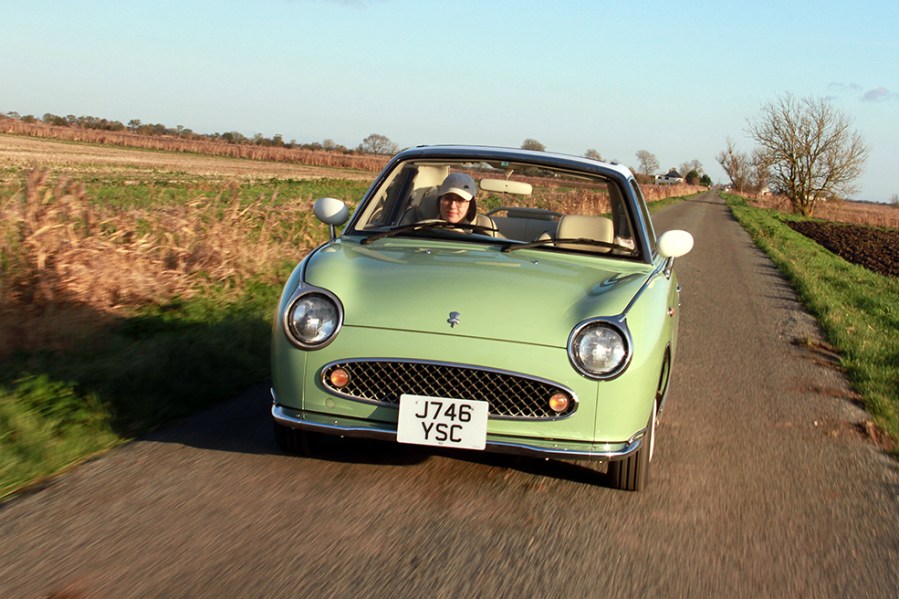
Suspension, steering and brakes
A combination of light weight and a driving experience that promotes a relaxed approach means it’s no surprise to discover that the running gear doesn’t get a hard time. It’s mostly just a case of ensuring that brake and suspension components are still in good health, and with parts freely available and inexpensive there’s nothing too much to worry about. By way of example, a pair of front discs is just £70 with a set of front struts and coil springs setting you back less than £250. That said, cars that are used just for occasional weekend fun can end up suffering from perished bushes and components seizing up through lack of miles.
As for the steering it should feel light and accurate on the road, so anything else needs investigation. The power-assisted rack can suffer from fluid leaking from the pinion shaft input seal, although Figaro specialist DTN can repair this with the rack in-situ. If a worn unit needs replacing then budget in the region of £350 for a reconditioned one.
Interior and trim
The light-coloured interior means dirt and shabbiness will show up very quickly, so a clean, smart cabin points to careful ownership. All Figaros had leather seat trim so look for any damage or signs of sub-standard renovation work, and bear in mind that good quality new covers could you set back in excess of £1000. Also important is checking for damp carpets – there’s quite a complex seal around the rear of the roof and the boot and there’s the potential for water to flow into the cabin rather than the boot. Some of the plastic interior trim panels can become a bit sticky over time, too, but specialists and the owners’ club can advise on the best way to tackle this without causing damage.
Electrically-speaking, it’s all pretty straightforward so just take the time to ensure that everything’s working, particularly the electric windows which can suffer from failed switches and regulators. The original Clarion audio unit might have been upgraded or replaced by now, too, so check what’s been done. And it’s also worth ensuring the air-conditioning still functions as getting an inoperative system up and running can see costs mount up – a new condenser can cost upward of £500, for example.
You’ll also want to be sure that the roof mechanism works as it should, so check the switch in the cabin that releases the boot lid and the operation of the locking catches; an alarm should sound if the roof isn’t locked securely. One last point to mention involves establishing the true mileage reading as this could have been affected by the use of a device to convert the speedometer to miles per hour; the result could be an odometer displaying what’s essentially a mix of kilometres and then miles following the conversion.

Nissan Figaro: our verdict
While the cutesy, retro styling isn’t going to make the Figaro everyone’s cup of tea, there’s no doubt they engender a lot of loyalty amongst those that ‘get’ them. That’s understandable because they have a style all of their own, and even being a relatively common sight on UK roads they have the ability to turn heads. That alone might be enough to sway you into buying one, and as long as you take the time to find a car that’s rust-free and been well-maintained there’s really nothing that should make ownership anything but fun and enjoyable. Factor in a good choice of specialists and an enthusiastic and very knowledgeable owners’ club and you may just find yourself smitten by this car’s charms.
It’s often all too easy with classics to get bogged down in model variations and engine choice and the like, but there’s no such complication here; just the one model on offer and a production run lasting months and not years makes establishing values a bit simpler. If you can find such a thing – they seem rather rare in the classifieds – then a project can probably be found for up to £1500, but a number of the cars are in the £4000 to £8000 range.
The lower of these figures and up to £6000 gets a reasonable example that’s perhaps in need of some work, while at the upper end you’re looking at something usefully sound. Very good ones with a mileage of 50k or less are £10,000–12,000, while the absolute best examples can command upwards of the mid-teens. The owners’ club’s advice? Spend as much as you can afford.

